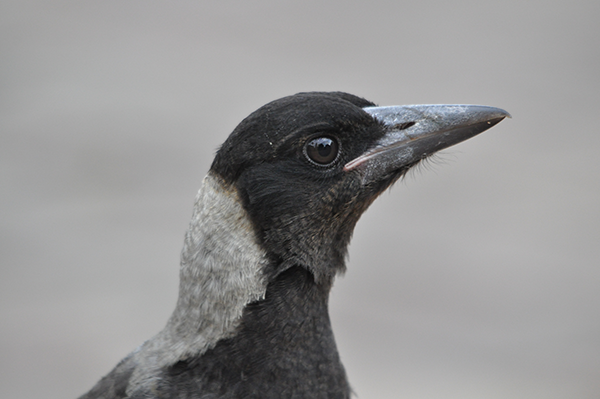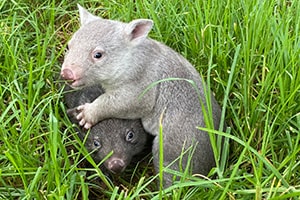Magpies
Australian Magpies are protected as are all native species and they belong to the same family as Butcherbirds and Currawongs. They are found in areas where there are trees (used for shelter, nesting and roosting) and bare or grassy areas in which to feed.
Magpies forage on the ground, turning over loose material, as they search for a range of insects, worms, spiders, lizards, mice and seeds. A favourite food is the scarab beetle which does so much damage to lawns.
Magpies live in territorial groups. At the top of the social structure is the permanent territorial group, large enough to defend its territory without depleting resources. There are also marginal groups whose territories are lower in quality and may not contain enough year round food or suitable nesting or roosting trees. On the bottom rung are loose non-territorial flocks made up of immature birds, displaced adults or older birds.
Appearance
The adult Australian magpie ranges from 37 to 43 cm in length, with distinctive black and white feather and gold brown eyes. With its long legs, the Australian magpie walks easily and spends a lot of time on the ground.
Breeding
Nesting time is June to December. The nests are a basket of sticks and stems lined with wool, hair, grass and often bits of plastic, string and wire. It takes about 20 days for the eggs to hatch and the young spend 4 weeks in the nest before they fledge, able only to flutter and not fly. As the juveniles get older their hunting skills improve and the adults become reluctant to feed them. It is at this time you may see the parents pecking them when they make begging calls.Swooping Magpies
For a few weeks each year during breeding season, nesting Magpies defend their territory to protect their young.
They beat their wings, clack their beaks, swoop upon perceived intruders and occasionally peck or scratch with their claws. This defence of territory only lasts for the time when eggs and young are in the nest. For this reason swooping birds should never be removed from the area as; eggs will fail to hatch or the young will die of starvation and exposure without their parents, if the territory is vacated other magpies from less suitable areas will claim it and build a new nest of their own and if only the nest is removed, the birds will build another one in the same area. To protect people for the short breeding season please;
- Try to avoid the area where the magpies are swooping and make a temporary sign to inform other people.
- Wear a hat while in the area or carry an open umbrella, which is the best protection.
- Do not stop if you are swooped upon. You are still in the magpie’s territory so they will keep swooping.
- Where possible travel in a group as most birds only swoop individuals.
- Cyclists should dismount and walk through the area.
- Walk quickly until you are out of the area and remember their behaviour will stop as soon as their chicks are safely out of the nest.
Rescuing Magpies
If you find a sick, injured or orphaned magpie please call WIRES Rescue Office 1 300 094 737 or fill in the Rescue Form. If the magpie is sick or injured it will need to see a vet before coming into care, if you are able to safely contain it, you can keep it in a quiet, dark, warm place e.g. wrapped in a towel in a ventilated box or carrier with a lid while you transport it to the nearest vet. If you let WIRES know which vet you’ve taken the bird to, we will follow up with the vet directly to bring them into care after they have been vet assessed and received any necessary treatment.
Note: Baby magpies leave the nest without being able to fly properly. For the first week or so they will just be able to flutter and rely on their parents for protection and food. Day by day their skills at flying and feeding will improve. If you see a baby magpie sitting on your lawn don’t rush out and grab it. Keep pets and people away and watch carefully to see if parents are in attendance. If the parents are attending to it and the chick is in no immediate danger, it should be left with its parents. For more information please read our birds page.
Newsletter
Stay in touch with our regular rescue stories and WIRES updates.


